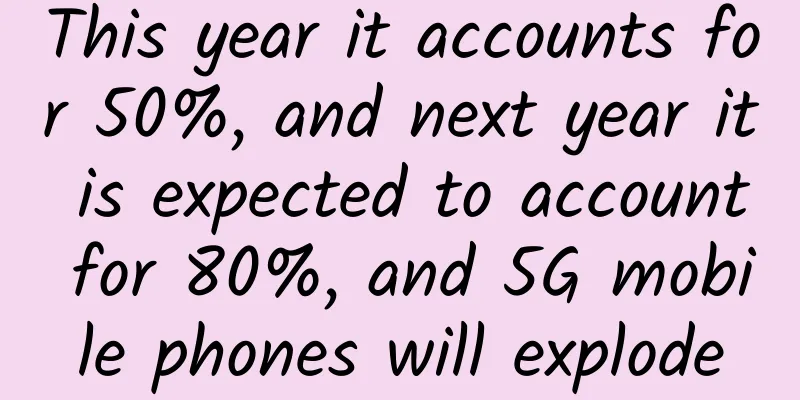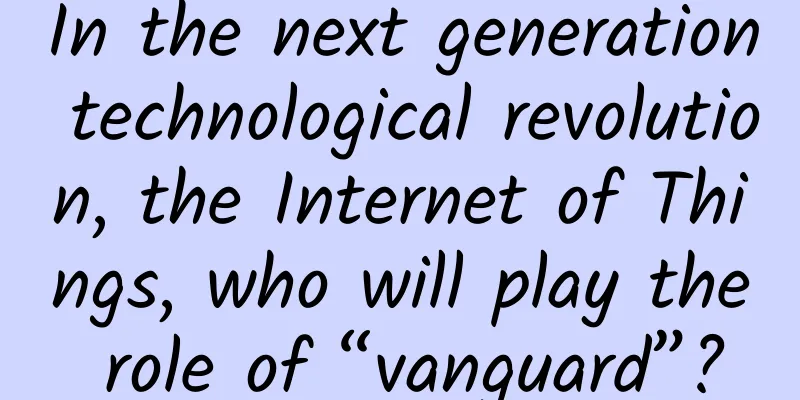This year it accounts for 50%, and next year it is expected to account for 80%, and 5G mobile phones will explode

|
In the past year since 5G was put into commercial use, the 5G penetration rate of domestic mobile phone shipments has exceeded 50% this year, and is expected to exceed 80% next year. 5G mobile phones have entered a period of market explosion. Major mobile phone manufacturers have steadily promoted product experience, and users' willingness to change phones has been greatly stimulated. With the joint promotion of the macro, industry, and user levels, and the coordinated cooperation of networks, content applications, and terminals, the popularization of 5G mobile phones has entered the fast lane.
The domestic penetration rate of 5G mobile phones exceeds 50% Data shows that from January to November 2020, the cumulative shipments of 5G mobile phones in the domestic market reached 144 million units, and a total of 199 new models were launched, accounting for 51.4% and 47.7% respectively. The market share of 5G mobile phones continues to increase. Judging from the monthly data, starting from June this year, 5G mobile phone shipments accounted for more than 60% of the monthly shipments, and the proportion has remained high in the future. At present, there are 217 5G mobile phones in my country that have obtained network access licenses. China Mobile expects the penetration rate of 5G mobile phones to reach 80% in 2021. IDC data predicts that in 2020, global 5G mobile phone shipments will be about 240 million units. The contribution of the Chinese market will exceed 160 million units, accounting for about 67.7%. In the next five years, China will continue to occupy about half of the global market share. The rapid development of 5G mobile phones in China is inseparable from the joint efforts of the macro, industry and user levels. Jian Qin, deputy general manager of China Mobile, said that from a macro perspective, the new infrastructure and the new development pattern with the domestic big cycle as the main body and the domestic and international double cycles promoting each other have brought greater space and established stronger confidence for the development of 5G and terminal consumption. It is estimated that by 2025, domestic 5G will drive a market size of nearly 10 trillion yuan, of which terminal equipment will be 1.4 trillion yuan. From an industry perspective, 5G mobile phones will enter a stage of explosive growth. At present, products above 1,500 yuan have basically completed the 5G switch. Next year, we will continue to promote the reduction of 5G mobile phone costs, achieve full coverage of models above 1,000 yuan, and actively promote the coverage of models below 1,000 yuan. Next year, the 5G penetration rate in 1,000 yuan machines will exceed 90%. Jian Qin predicts that the industry's mobile phone sales will exceed 350 million units next year, of which 5G mobile phones will exceed 280 million units, and the sales scale of the mobile phone market will exceed 1 trillion yuan. From the user perspective, there is a strong demand for 5G devices. According to data from China Mobile's network, the monthly activation volume of 5G terminals has exceeded 14 million, and it is expected that by the end of next year, the monthly activation volume will exceed 27 million. There are two core factors that enable China to lead the global 5G market. IDC research believes that, first, compared with the global market, China's 5G terminal pricing strategy is more aggressive. In the second quarter, the average unit price of 5G mobile phones in the international market was US$837 (excluding tax), while in the Chinese market it was only US$464. Second, China has a wider coverage of user groups in the mainstream price range. Manufacturers steadily improve product experience Judging from the shipment volume of 5G mobile phones in the third quarter of this year, IDC data shows that among domestic mobile phone manufacturers, Huawei still ranks first; OPPO and vivo continue to rank second and third, relying on the market performance of multiple mainstream 5G models in various price ranges, their market share has increased quarter-on-quarter; Xiaomi ranks fourth, and realme ranks among the top five thanks to the entry of multiple new products into the market through online and offline channels in September. Specifically, Huawei was affected by multiple rounds of bans in the United States and began to decline in the third quarter. On the one hand, Huawei began to carefully control the shipment rhythm of its entire product line; on the other hand, many product lines widely recognized by consumers, including the Mate 30 series, gradually reduced or discontinued. OPPO also significantly narrowed its year-on-year decline in the third quarter by focusing on the 5G mobile phone market in the price range of 1,500 to 2,500 yuan. In the future, as the three brands of OPPO, realme, and OnePlus gradually integrate and complement each other at the product, channel, and ecological levels, the positioning and distinction between the three will become clearer. Vivo puts more energy on meeting and supplementing the needs of user groups in different price segments. In the mainstream price segment of less than 2,000 yuan, more low-priced 5G products will be penetrated through the Y series; in the mid-range price segment, while continuing to focus on the two major features of appearance and selfie, the previously popular S6 series will be quickly iterated to S7; and in the high-end market, the updated iQOO 5 series and the flagship products of the X series can also cover high-end groups with different channels and needs. This year, the biggest highlight in the 5G mobile phone industry is Apple's belated launch of its first 5G product, the iPhone 12 series. Wang Xi, research manager of IDC China, said that based on the current pace of China's 5G market and the appeal of the Apple brand in China, the new iPhone is expected to inject new vitality into this year's relatively sluggish mobile phone market from the two levels of terminals and applications, and will boost the penetration and popularization of 5G in China. Overall, consumers' experience with 5G mobile phones has improved compared to the past. According to the "China Telecom Terminal Insight Report 2020 Edition", this year consumers' perception of 5G services has risen from 55.6% in the second half of 2019 to 70.9%. However, there are also experience pain points such as short standby time, mobile phone freezes, high prices, and poor material texture, which need to be continuously improved by mobile phone manufacturers from the perspective of product design. In addition, consumers also have many expectations for 5G mobile phone technology, such as doubling the network speed brought by 5G+WiFi6 channel aggregation, 120W and above priority wireless fast charging, full-screen fingerprint recognition, 3D camera, intelligent variable refresh rate screen, etc. Accelerate the creation of a 5G mobile internet ecosystem The popularization of 5G mobile phones requires the coordinated advancement of networks, devices, and content applications. This year marks the first anniversary of the commercial use of 5G by operators. According to the data from the Ministry of Industry and Information Technology, my country has built the world's largest 5G network, with a total of 718,000 5G base stations built and 330,000 5G base stations jointly built and shared. By the end of September, cities such as Beijing, Shanghai, Guangzhou, and Hangzhou had achieved continuous coverage of 5G networks in urban areas. In the operator sector, it is understood that China Mobile's 5G package customers have exceeded 100 million in 10 months, and are expected to exceed 150 million by the end of the year. The number of 5G mobile phone users has reached 90 million, and will exceed 100 million within the year, and development has entered the fast lane. In terms of applications, the close integration of 5G mobile phones and applications brings more colorful user scenarios. Taking 5G message video, games, XR, cloud computing, and super SIM as the five major application scenarios, we actively incubate 5G "killer" applications, accelerate the construction of 5G mobile phone supporting ecology, and speed up the adaptation with mobile terminals. Industry insiders said that improving the 5G mobile phone experience requires joint innovation among all parties in the industry, accelerating the development of industries such as cloud gaming, high-quality 3D panoramic content, and ultra-high-definition video live streaming, and jointly building a new 5G mobile phone ecosystem. |
<<: As of December 2020, there are 229 million 5G users worldwide
>>: my country's 5G base stations reach 718,000 to boost the development of artificial intelligence
Recommend
Talking about my cold thoughts on SD-WAN on the crater
SDWAN will be the most valuable investment outlet...
PacificRack: $8/month Windows VPS-4GB/60G SSD/30M unlimited/Los Angeles
At the end of last month, I just shared the news ...
Megalayer: New US home broadband VPS products with 50% discount starting from 80 yuan/month, unlocking multiple application scenarios
Megalayer also launched a new product this month:...
2018 Top Ten Internet Trends Prediction: 5G Becomes the Focus
Whether it is the turbulent forty years in Wu Xia...
Brazil: No Huawei in 5G bidding requirements
According to foreign media reports, Brazilian Com...
Wuhan East Lake High-tech Zone built a video conferencing system in seconds to improve work efficiency
Under the tough order of "admit everyone who...
Banwagong THE PLAN replenishment season payment starts from $27, available in US CN2 GIA/Japan/Hong Kong, etc.
Bandwagonhost THE PLAN VPS is back in stock. When...
IOFLOOD: $59/month-E3 1230v2, 32GB memory, 2x8TB hard disk, 20TB/1Gbps, Phoenix data center
I checked and found that the last time I shared i...
China Unicom experts: 5G should embrace AI from five aspects
5G uses large-scale antenna systems and ultra-den...
Is your network AI as smart as you think?
[[418239]] Network operators tell me that in the ...
Forty-five kinds of traditional knowledge about optical fiber and optical cable
1. Briefly describe the composition of optical fi...
How DevOps is shaping the future of networking
Since its advent in 2009, the DevOps philosophy h...
Yang Xuqing of Softcom Wisdom: Leveraging the advantages of AI and working with Huawei Ascend to promote industry development
As one of Huawei Ascend's important ecologica...
Relationship-aware routing and global traffic scheduling · SOSP 2019
[[345832]] "Read the Papers" is a serie...









